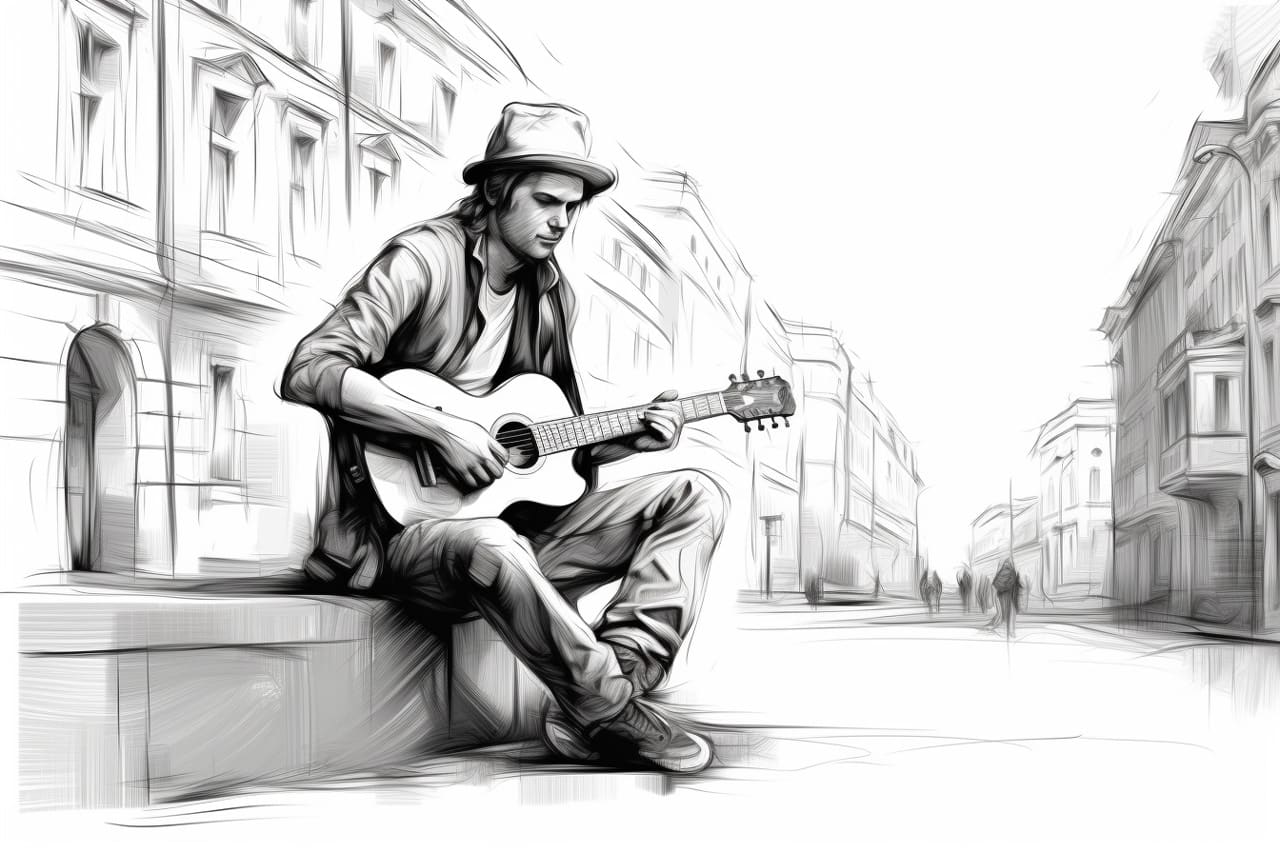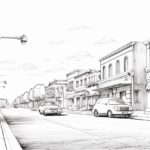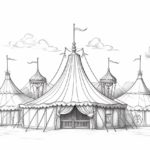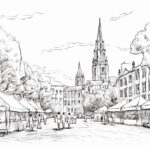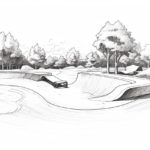Drawing street performers can be a fantastic way to capture the energy and vibrancy of urban life. From musicians and dancers to magicians and living statues, street performers add a dynamic element to city streets and squares. In this guide, we will explore techniques for capturing the essence of these talented individuals by learning how to draw a street performer. Whether you are a beginner looking to improve your skills or an experienced artist seeking new inspiration, attracting street performers offers a unique opportunity to connect with the city’s pulse and bring their performances to life on paper. So grab your sketchbook and pencils, and let’s dive into the exciting world of capturing street performers through art!
Materials Required
To draw a street performer, you will need the following materials:
- Drawing paper or sketchbook
- Pencils (preferably a range of graphite pencils such as 2H, HB, 2B, 4B, and 6B)
- Eraser (both kneaded and white eraser)
- Sharpener
- Drawing pens or markers (optional)
- Colored pencils or markers (optional, if you want to add color to your drawing)
- Reference photo of a street performer for inspiration
With these materials, you can create a detailed and expressive drawing of a street performer.:
Drawing a Street Performer: Step-by-Step Guide
Step 1: Sketching the Basic Pose
Start by lightly sketching the basic pose of the street performer. Focus on capturing the overall gesture and proportions of the figure. Use simple shapes like circles and ovals to map out the head, torso, and limbs.
Step 2: Adding Facial Features
Refine the sketch by adding facial features such as eyes, nose, mouth, and ears. Pay attention to the angle and expression of the face, as this will help convey the performer’s emotion and character.
Step 3: Detailing the Clothing
Add details to the street performer’s clothing, such as the texture of the fabric, folds, and patterns. Street performers often wear unique and colorful outfits, so feel free to get creative with the design.
Step 4: Drawing the Instruments or Props
If the street performer is playing an instrument or using props, carefully draw these elements. Pay attention to the intricate details of the instrument or prop to make it look realistic.
Step 5: Adding Background Elements
Consider adding background elements to place the street performer in a specific environment. This could include buildings, a crowd of onlookers, or a street sign. Background elements help provide context and tell a story.
Step 6: Refining and Adding Details
Go back over your drawing and refine the lines, adding more details and textures to enhance the overall appearance of the street performer. Pay attention to shading and highlights to create depth and dimension.
Step 7: Final Touches
Add any final touches to complete your drawing. This could include adjusting the contrast, adding shadows, or highlighting certain areas to make the street performer stand out.
Step 8: Optional: Adding Color
If you prefer to work in color, consider adding watercolors, colored pencils, or markers to bring your street performer to life. Experiment with different color schemes to create a visually appealing and dynamic drawing.
Remember, practice makes perfect, so don’t be afraid to experiment and try different techniques to improve your drawing skills. Enjoy the process and have fun capturing the essence of a street performer on paper!
Conclusion
Wonderful job on capturing the essence of the street performer in your drawing! Your attention to detail and ability to convey emotion through your artwork is truly impressive. Remember to continue practicing and exploring different techniques to further enhance your skills as an artist. Keep up the great work and never stop expressing your creativity through your art. The world is waiting to see more of your incredible talent!
Fun Facts About Street Performers
- Street performers have a long history dating back to ancient times, where entertainers would perform in public spaces for tips or donations.
- Street performers can come in many different forms, including musicians, magicians, jugglers, dancers, living statues, acrobats, and more.
- Many cities around the world have designated areas or permits for street performers to showcase their talents, adding to the cultural vibrancy of the area.
- Street performing can be a full-time career for some individuals, while others use it as a way to supplement their income or gain exposure for their talents.
- Street performers often rely on audience participation and tips to support themselves, making each performance a unique and interactive experience.
- Some street performers have gained worldwide recognition and success, such as the famous French mime artist Marcel Marceau or the British escapologist and street magician, David Blaine.
- Street performing requires a combination of talent, creativity, charisma, and resilience, as performers must often adapt to different environments and audiences on the fly.
- Street performers play an important role in bringing art and entertainment directly to the people, making culture more accessible and inclusive for all.
- Street performing can also serve as a platform for social commentary, activism, and storytelling, allowing performers to engage with important issues and connect with their audience on a deeper level.
- Many street performers form communities and networks to support each other, share resources, and collaborate on projects, creating a supportive and vibrant subculture within the larger entertainment industry.
Suggestions for Scenes and Settings for Street Performer Drawings
Certainly! Here are some suggestions for scenes and settings you can use to draw street performers:
- Urban street scene: A bustling city street with tall buildings in the background, cars and pedestrians passing by, and a street performer in the foreground showcasing their talent.
- Historical square: A picturesque town square with cobblestone streets, old architecture, and a street performer entertaining a crowd of onlookers.
- Beach boardwalk: A sunny boardwalk lined with palm trees, shops, and cafes, with a street performer adding to the lively atmosphere with their performance.
- Park setting: A peaceful park setting with trees, benches, and grassy areas, where a street performer is captivating an audience with their music or tricks.
- Festival or market: A vibrant festival or market setting with colorful tents, food stalls, and crowds of people milling about, while a street performer adds to the festive vibe with their act.
- Subway station: An underground subway station with commuters rushing to catch trains, and a street performer brightening up the scene with their music or dance routine.
- Old town alleyway: A charming old town alleyway with quaint shops, cobblestone streets, and a street performer bringing life to the narrow passage with their performance.
- Waterfront promenade: A scenic waterfront promenade with boats in the harbor, seagulls flying overhead, and a street performer entertaining passersby with their skills.
These are just a few ideas to get you started. Feel free to mix and match elements to create your own unique scenes featuring street performers!

